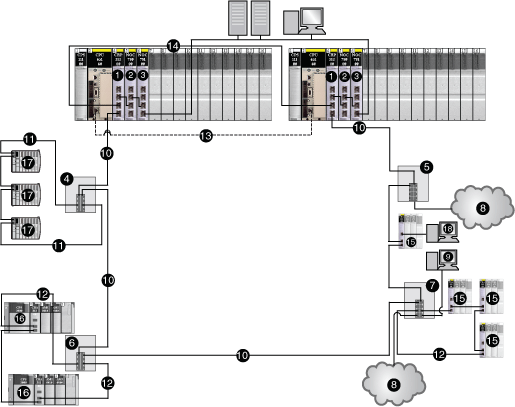|
Quantum EIO System Introduction
|
|
|
Original instructions
|
 WARNING WARNING |
|
UNEXPECTED EQUIPMENT BEHAVIOR
Failure to follow these instructions can result in death, serious injury, or equipment damage.
|

|
Life Cycle Phase
|
Feature
|
Description
|
|---|---|---|
|
design phase
|
standard
|
reduce the learning and engineering time
|
|
open
|
collaborate with third-party solutions
|
|
|
flexible
|
adapt the control architecture to the plant topology
|
|
|
efficient
|
design the solution without constraints
|
|
|
operation phase
|
transparent
|
provide access to I/O modules and devices from the control network
|
|
highly available
|
reduce process downtime
|
|
|
renew phase
|
sustainable
|
preserve long-term investment, allow smooth migration
|

1140 CRP 312 00 remote I/O head module on the local rack
2140 NOC 780 00 distributed I/O head module (connected to the 140 CRP 312 00 head module)
3140 NOC 781 00 control head module on the local rack (connected to the 140 NOC 780 00 head module)
4DRS (connected to a distributed I/O sub-ring)
5DRS (connected to a distributed I/O cloud)
6DRS (connected to a remote I/O sub-ring)
7DRS (connected to a remote I/O sub-ring, distributed I/O cloud, and PC/port mirror)
8distributed I/O cloud
9PC for port mirroring
10main ring
11distributed I/O sub-ring
12remote I/O sub-ring
13CPU-sync link
14140 CRP 312 00 head module-sync link
15Quantum remote I/O drops (including a 140 CRA 312 00 adapter module)
16Modicon X80 remote I/O drops (including a BMX CRA 312 10 adapter module
17distributed I/O devices (STB NIP 2311 NIM on an STB island)
18Control Expert connection using the service port on the 140 CRA 312 00 adapter module